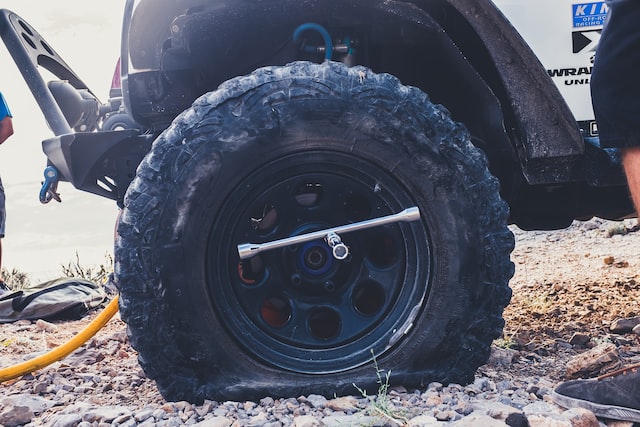
A flat tire can happen to anyone, at any time and it can be a frustrating and potentially dangerous situation. Flat tires happen unexpectedly and often in the most inconvenient places, that’s why it’s essential to know what to do in case it happens to you. A flat tire can ruin your day, but you don’t have to be stranded on the side of the road.
With the right knowledge and preparation, you can change a flat tire quickly and safely. In this article, we will discuss what to do when you have a flat tire, including how to safely change a tire, how to use a spare tire, and when to call for professional help.
What to do with a flat tire? Safety first!

If you experience a flat tire while driving, it’s important to take the following steps to ensure your safety and the safety of others:
- Find a safe location: If you have a flat tire while driving, it’s important to find a safe location to change the tire. If possible, pull over to the side of the road in a well-lit area, away from traffic. If you are on a highway or other high-speed road, turn on your hazard lights and use your car’s reflectors or flares to warn other drivers.
- Turn on your hazard lights: Once you have stopped your car, turn on your hazard lights to alert other drivers to your presence.
- Get your tools and spare tire: Gather the tools and spare tire that you will need to change the tire. This may include a jack, lug wrench, and any other tools that are specific to your car.
- Remove the flat tire: Use the lug wrench to loosen the lug nuts on the flat tire. Once the lug nuts are loose, use the jack to lift the car off the ground, and then remove the flat tire.
- Install the spare tire: Place the spare tire onto the wheel hub, and secure it using the lug nuts. Use the lug wrench to tighten the lug nuts as much as you can by hand, then use the lug wrench to fully tighten them.
- Lower the car: Once the spare tire is securely in place, use the jack to lower the car back to the ground.
- Test the spare tire: Once the car is back on the ground, test the spare tire to make sure it is properly inflated and that the car is stable. If the spare tire is not properly inflated, or if the car is not stable, do not drive on it.
By following these steps, you can safely and efficiently change a flat tire and get back on the road.
Flat tire? Sometimes it’s better to call for professional help

There are certain situations where it is safer and more appropriate to call for professional help when you have a flat tire. Here are a few examples:
- If you are not comfortable or able to change the tire yourself: Changing a tire can be physically demanding, especially if you are not accustomed to it. If you are not confident in your ability to change a tire, or if you have any physical limitations that would make it difficult or dangerous to do so, it is best to call for professional help.
- If you are on a busy or high-speed road: Changing a tire on a busy or high-speed road can be dangerous. If you find yourself with a flat tire on a busy highway or expressway, it is safer to call for professional help and wait for assistance on the shoulder of the road.
- If you have a run-flat or special tire: some vehicles have special tires that require specialized equipment or training to change them, If you are not familiar with the specific type of tire your vehicle uses, it is safer to call for professional help.
- In case of an emergency: If you have a blowout or other emergency situation with your tire, it is important to pull over and call for professional help immediately.
- If you don’t have the right tools: Changing a tire requires some specific tools such as a jack, lug wrench, wheel chocks, etc. If you don’t have these tools or they are not working, it’s best to call a professional.
In any of these situations, be sure to call a professional, a tow truck or road assistance service, they will come to your location and change the tire or take your vehicle to a repair shop where they will change it.
